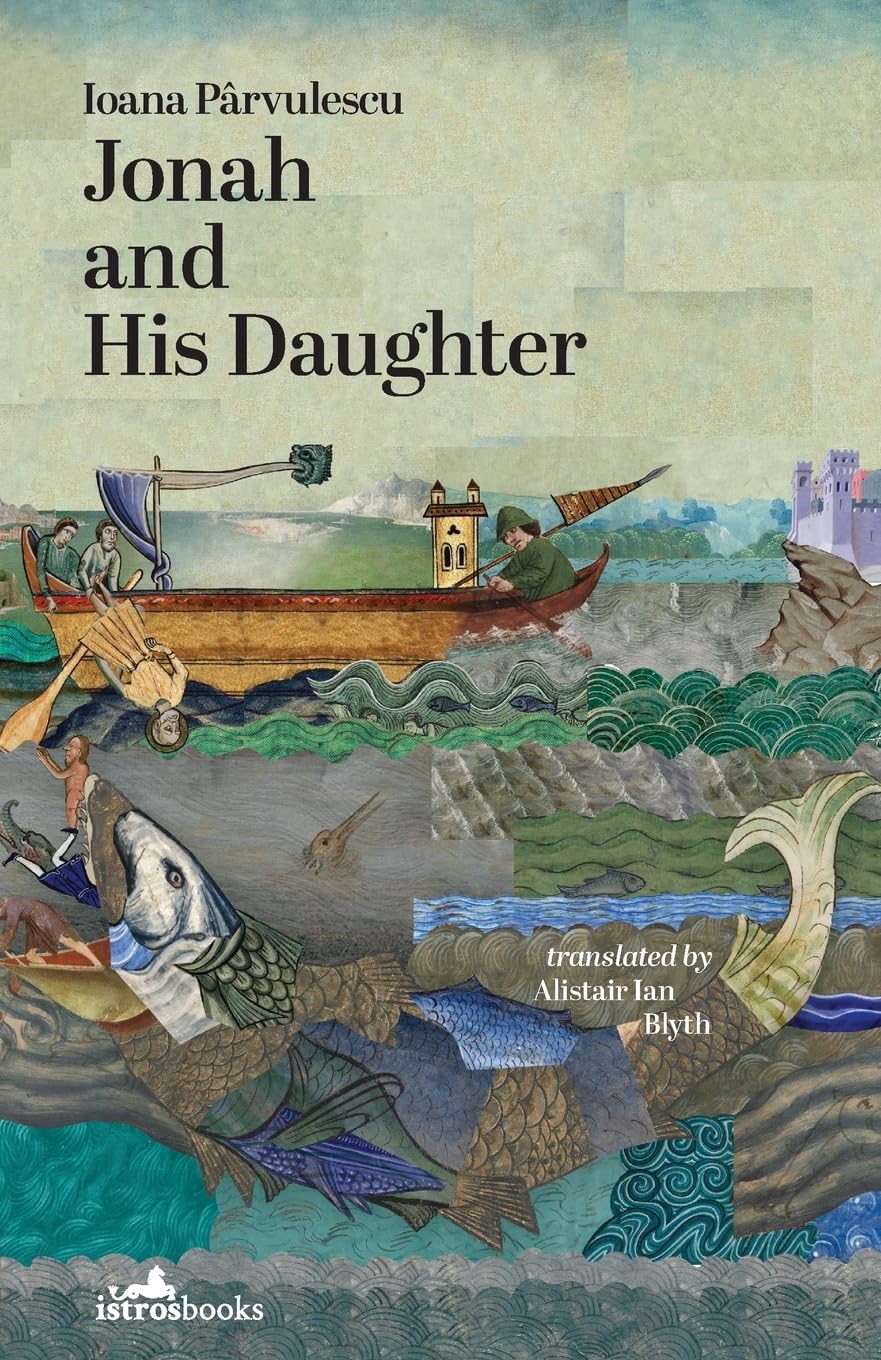Ioana Pârvulescu
Translated by Alistair Ian Blyth
Istrosbooks ($16.99)
by Rick Henry
Ioana Pârvulescu’s Jonah and His Daughter is the latest in what might be considered a genre of its own: reimagined versions of works featuring women in the Old Testament. Pârvulescu delivers a new spin on this, taking as her starting point one of the shortest books in the Old Testament: the fable that recounts how the prophet Jonah comes to understand that God’s compassion extends to all. Pârvulescu builds a novel from that Biblical fable, adding characters, expanding dramatic events, and humanizing the main character by exploring his faults as he works through the conflicts that build to his ultimate crisis.
She could have left it at that, and have given us a perfectly fine novel. Pârvulescu, however, gives contemporary readers a second story—that of the story itself as it evolves in its passing from grandmother and mother to daughter (each daughter hears the story twice) through nearly one hundred generations. While names and property are passed father to son, storytelling becomes the province of mothers and daughters; free to interrupt Jonah’s story at will, Pârvulescu’s women offer their revisions, comment on the function of fiction, and rehearse the matriarchal line that undermines the dominant narrative of the patriarchy. With its explicit argument for the power of storytelling, Jonah and His Daughter invites us to read this Old Testament fable as something that deepens through time.
The story of Jonah begins as Jonah suffers the charge from God: Save the city of Ninevah from its depravity; let them know how bad they are and give them forty days to repent. But in Pârvulescu’s telling, we quickly find ourselves with Jonah’s daughter, Esther. Her grandfather, who has recently died, was everything to her, and her mother, who died giving birth to her, is long gone. She is left with Jonah, who “didn’t trouble himself at all about me.”
While the story builds to the storm and Jonah’s famed encounter with the whale, and eventually details how he overcomes the world view that only the anointed can be saved by getting depraved Ninevah to repent, it is important to note that it’s Esther who initiates the enduring story of her father—despite her difficulties with him, she feels compelled to ensure his legacy. Over the succeeding centuries, and despite being officially written down for the Bible, Jonah’s story maintains its oral foundation and susceptibility to change as the women continue its telling.
Pârvulescu’s hermeneutic transformations of the tale are impressive. Dalila relates the story of Jonah to her granddaughter Phoebe, but casts doubt on details, including the actual swallowing of Jonah by the monster. This, she argues, was embroidered by storytellers over the years “so that they could fill their children with awe and see their mouths agape”; Jonah might have been in a giant fish’s mouth or under its fin, but the point of the encounter, says Dalila, is to mark the moment when Jonah “regained his power of speech.” By the time Phoebe’s great-great-granddaughter hears the story, the purpose of storytelling has changed: now it is to bring joy and use the imagination to help find clarity in the world (a form of Aristotle’s “edify and delight”).
By the time of Cervantes, the story has become a fairy tale; should there be a “gap or something unbelievable, I’ll fill it in from my imagination, because otherwise, if everything has to be given a rational explanation, what’s the good of telling stories?” By the time of De Sade, the ability to describe debaucheries with abandon perhaps suggests why God directed Jonah to go to Ninevah in the first place. Science enters the story with detailed descriptions of childbirth and anatomy. And so it goes, to the Parisian art world of the late nineteenth and early twentieth centuries, the era of Hollywood, and the age of Internet.
At that point the story of Jonah is completed, but Pârvulescu offers one final transformation in an Epilogue, situated in the twenty-first century. Here the storyteller assumes prominence and Jonah’s story becomes her story, the book we now hold: Jonah and His Daughter. Embedded in that is yet another manifesto of sorts, one ultimately resting in literature as play.
Click below to purchase this book through Bookshop and support your local independent bookstore:
Rain Taxi Online Edition Winter 2024-2025 | © Rain Taxi, Inc. 2025

